Occurrence Characteristic and Mining Technology of Ultra-thick Coal Seam in Xinjiang, China
Abstract
1. Introduction
2. Distribution Characteristic of Ultra-thick Coal Seams in Xinjiang
3. Occurrence Characteristic of Typical Ultra-thick Coal Seams
3.1. Occurrence of Shaerhu Coalfield
3.2. Occurrence of East Junggar Coalfield
3.3. Form of Ultra-Thick Coal Seam
4. Change Characteristic of Support Load in Ultra-thick Coal Seam Multi-layer Mining
4.1. Evolution Process of Roof Bearing Structure in Multi-Layer Mining of Ultra-Thick Coal Seam
4.2. Change Characteristic of the Load on Support under Different Roof Bearing Structures
4.2.1. Support Load under Roof Beam Bearing Structure
4.2.2. Support Load under Roof Higher Beam Bearing Structure
4.2.3. Support Load under Roof Arch Bearing Structure
4.2.4. Support Load Change Characteristic under Different Roof Bearing Structures
5. Classification and Mining Technology Selection of Ultra-thick Coal Seam
5.1. Height Development Characteristics of Roof Bearing Structure in Multi-layer Mining
- If HM < Hn, ultra-thick coal seam belongs to type I coal seam. There is no stable bearing structure in the roof strata, and the support load at the later stage of mining is all or most of gravity load of overburden strata.
- If Hn < h and Hn < HM, ultra-thick coal seam belongs to type II coal seam. The roof bearing structure is (higher) beam structure, and the support load is the gravity load of rock strata under the bearing structure and the load caused by the rotary subsidence of broken hard rock blocks.
- If Hn ≥ h and h < HM, ultra-thick coal seam belongs to type III coal seam. At the later stage of mining, the roof bearing structure is arch structure, and the load on support is mainly the gravity load of loose blocks under the arch.
5.2. Mining Technology Selection of Ultra-thick Coal Seam
6. Conclusions and Prospects
Author Contributions
Funding
Acknowledgments
Conflicts of Interest
References
- Volkov, V.N. Phenomenon of the Formation of Very Thick Coal Beds. Lithol. Miner. Resour. 2003, 38, 223–232. [Google Scholar] [CrossRef]
- Wang, D.D.; Shao, L.Y.; Liu, H.Y.; Shao, K.; Yu, D.M.; Liu, B.Q. Research progress in formation mechanisms of super-thick coal seam. J. China Coal Society 2016, 41, 1487–1497. [Google Scholar]
- Rošer, J.; Potočnik, D.; Vulić, M. Analysis of Dynamic Surface Subsidence at the Underground Coal Mining Site in Velenje, Slovenia through Modified Sigmoidal Function. Minerals 2018, 8, 74. [Google Scholar] [CrossRef]
- Khan, I.; Javed, A. Spatio-Temporal Land Cover Dynamics in Open Cast Coal Mine Area of Singrauli, M.P., India. J. Geogr. Inf. Syst. 2012, 4, 521–529. [Google Scholar] [CrossRef]
- Zarlin, N.; Sasaoka, T.; Shimada, H.; Matsui, K. Numerical Study on an Applicable Underground Mining Method for Soft Extra-Thick Coal Seams in Thailand. Engineering 2012, 4, 739–745. [Google Scholar] [CrossRef]
- Lin, N.; Sasaoka, T.; Shimada, H.; Hamanaka, A.; Matsuia, K. Numerical Analysis of Interaction Effects in Double Extra-thick Coal Seams Mining. Procedia Earth Planet. Sci. 2013, 6, 343–349. [Google Scholar] [CrossRef]
- Islam, M.R.; Hayashi, D.; Kamruzzaman, A. Finite element modeling of stress distributions and problems for multi-slice longwall mining in Bangladesh, with special reference to the Barapukuria coal mine. Int. J. Coal Geol. 2009, 78, 91–109. [Google Scholar] [CrossRef]
- Hu, S.R.; Lin, L.N.; Huang, C.; Chen, D.Y.; Hao, G.Q. Distribution and genetic model of extra-thick coal seams. Coal Geol China 2011, 23, 1–5. [Google Scholar]
- Shearer, J.C.; Staub, J.R.; Moore, T.A. The Conundrum of Coal Bed Thickness: A Theory for Stacked Mire Sequences. J. Geol. 1994, 102, 611–617. [Google Scholar] [CrossRef]
- Large, D.J.; Marshall, C. Use of carbon accumulation rates to estimate the duration of coal seams and the influence of atmospheric dust deposition on coal composition. In Strata and Time: Probing the Gaps in Our Understanding; Geological Society: London, UK, Special Publications, 2014. [Google Scholar] [CrossRef]
- Nadon, G.C. Magnitude and timing of peat-to-coal compaction. Geology 1998, 26, 727. [Google Scholar] [CrossRef]
- Diessel, C.; Boyd, R.; Wadsworth, J.; Leckie, D.; Chalmers, G. On balanced and unbalanced accommodation/peat accumulation ratios in the Cretaceous coals from Gates Formation, Western Canada, and their sequence-stratigraphic significance. Int. J. Coal Geol. 2000, 43, 143–186. [Google Scholar] [CrossRef]
- Diessel, C.F. Utility of coal petrology for sequence-stratigraphic analysis. Int. J. Coal Geol. 2007, 70, 3–34. [Google Scholar] [CrossRef]
- Wu, C.; Li, S.; Wang, G.; Liu, G.; Kong, C. The allochthonous genesis model about the extra-thick and high-quality coalbed in Xianfeng basin, Yunnan Province, China. Front. Earth Sci. China 2007, 1, 97–105. [Google Scholar] [CrossRef]
- Holz, M.; Kalkreuth, W.; Banerjee, I. Sequence stratigraphy of paralic coal-bearing strata: An overview. Int. J. Coal Geol. 2002, 48, 147–179. [Google Scholar] [CrossRef]
- Jerrett, R.M.; Davies, R.C.; Hodgson, D.M.; Flint, S.S.; Chiverrell, R.; Chiverrell, R. The significance of hiatal surfaces in coal seams. J. Geol. Soc. 2011, 168, 629–632. [Google Scholar] [CrossRef]
- Li, Z.X.; Wang, D.D.; Lv, D.W.; Li, Y.; Liu, H.Y.; Wang, P.L.; Liu, Y.; Liu, J.Q.; Li, D.D. The geologic settings of Chinese coal deposits. Int. Geol. Rev. 2018, 60, 548–578. [Google Scholar] [CrossRef]
- Zhang, D.S.; Liu, H.L.; Fan, G.W.; Wang, X.F. Connotation and prospection on scientific mining of large Xinjiang coal base. IJMME 2015, 32, 1–6. [Google Scholar]
- Li, Y.H.; Zhao, F.H.; Nie, H.G. Jurassic coal accumulation law of main coal-bearing basins in Eastern Xinjiang; Science Press: Beijing, China, 2015. [Google Scholar]
- Li, J.; Zhuang, X.G.; Querol, X.; Font, O.; Moreno, N.; Zhou, J.B.; Lei, G.M. High quality of Jurassic coals in the Southern and Eastern Junggar Coalfields, Xinjiang, NW China: Geochemical and mineralogical characteristics. Int. J. Coal Geol 2012, 99, 1–15. [Google Scholar] [CrossRef]
- Zhou, J.; Zhuang, X.; Alastuey, A.; Querol, X.; Li, J. Geochemistry and mineralogy of coal in the recently explored Zhundong large coal field in the Junggar basin, Xinjiang province, China. Int. J. Coal Geol. 2010, 82, 51–67. [Google Scholar] [CrossRef]
- Wang, X.F.; Qin, D.D.; Zhang, D.S.; Guan, W.M.; Xu, M.T.; Wang, X.L.; Zhang, C.G. Evolution characteristics of overburden strata structure for ultra-thick coal seam multi-layer mining in Xinjiang east Junggar basin. Energies 2019, 12, 332. [Google Scholar] [CrossRef]
- Jin, Z.M. Theory and Technology of Top Caving Coal Mining; China Coal Industry Publishing House: Beijing, China, 2001; pp. 1–258. [Google Scholar]



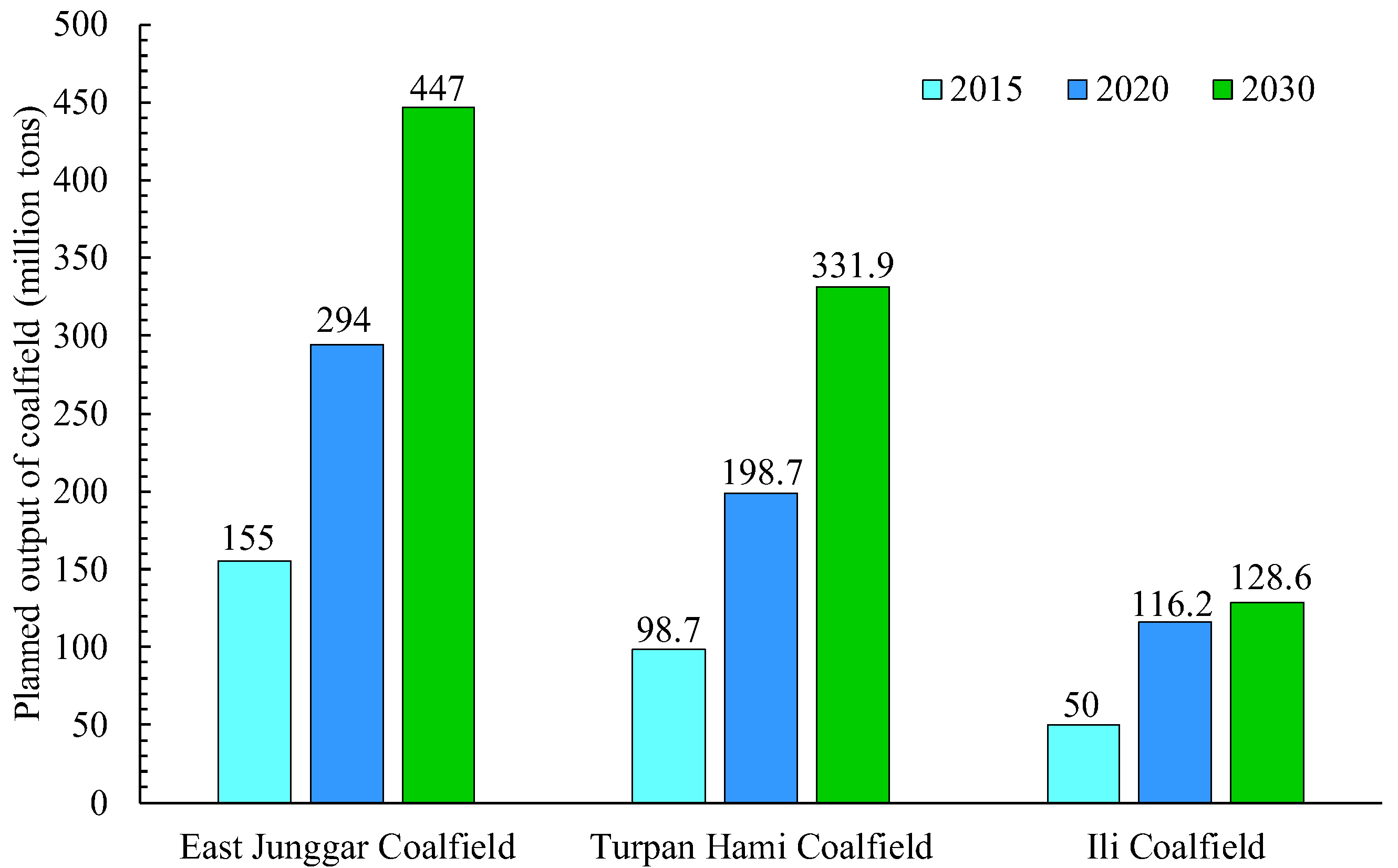



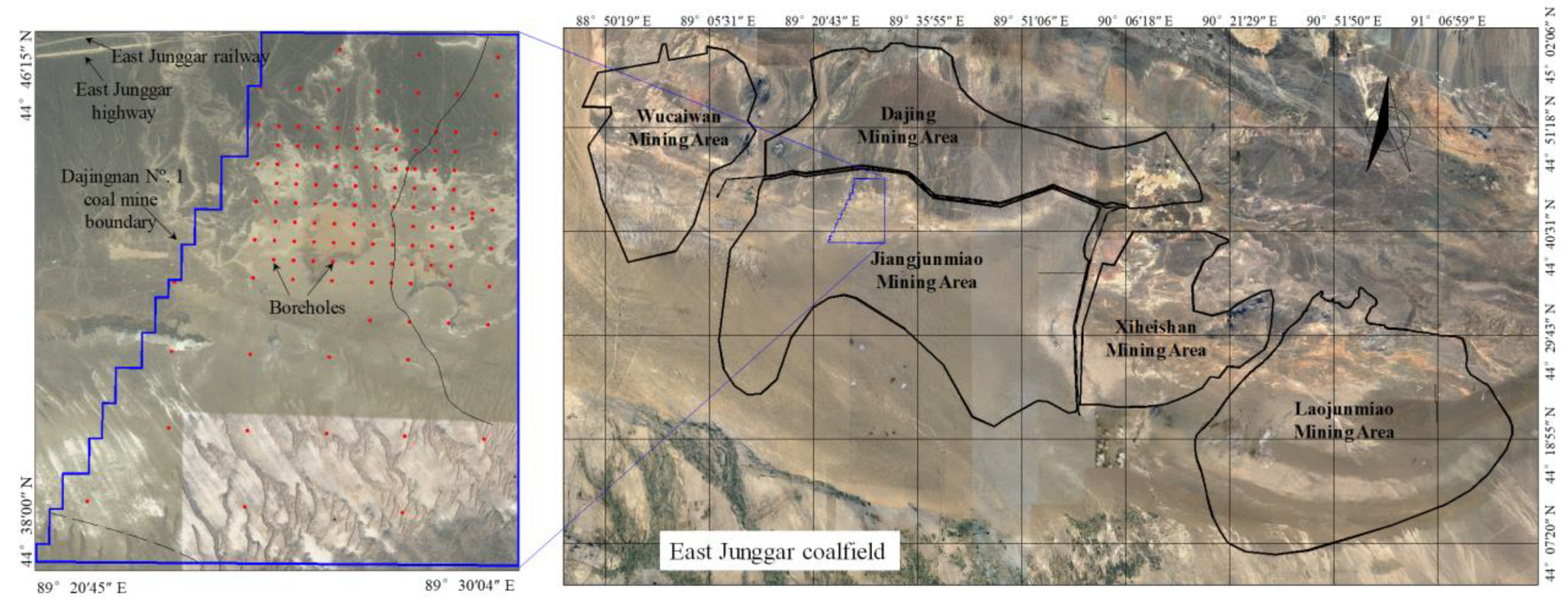
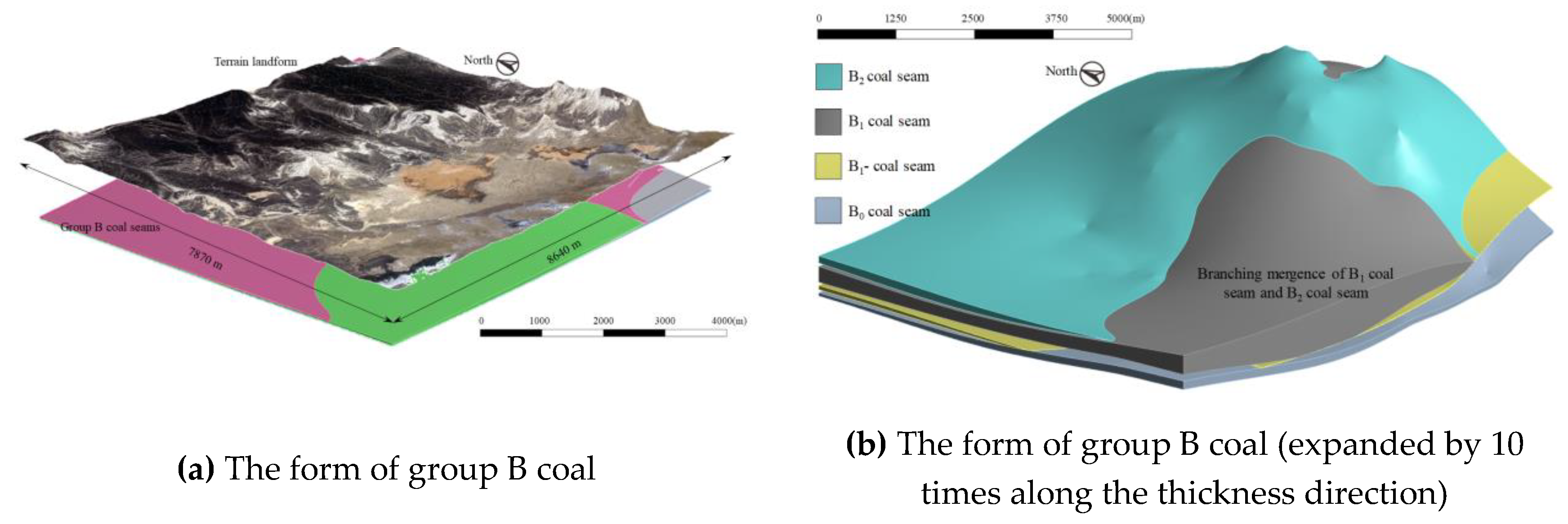
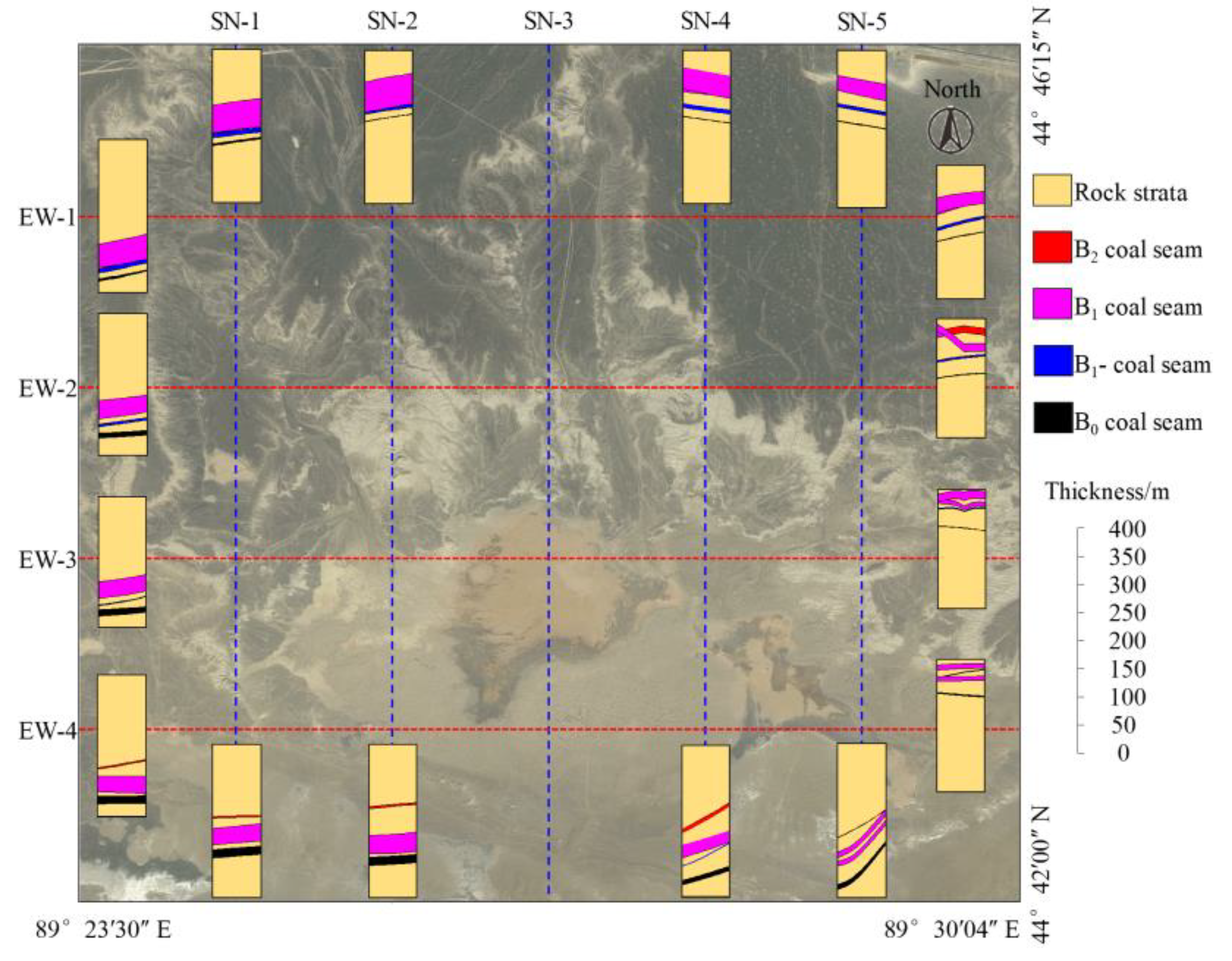



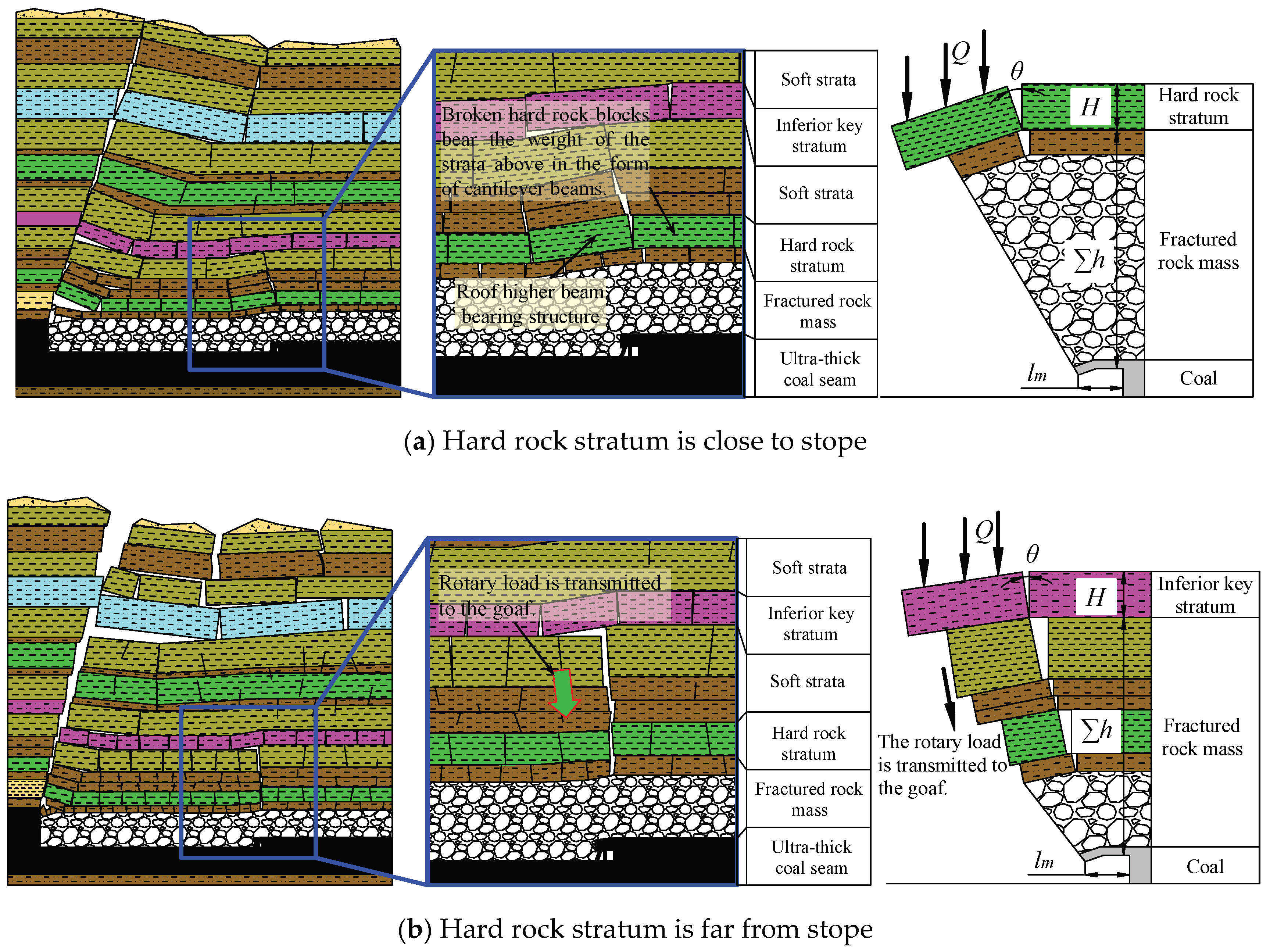

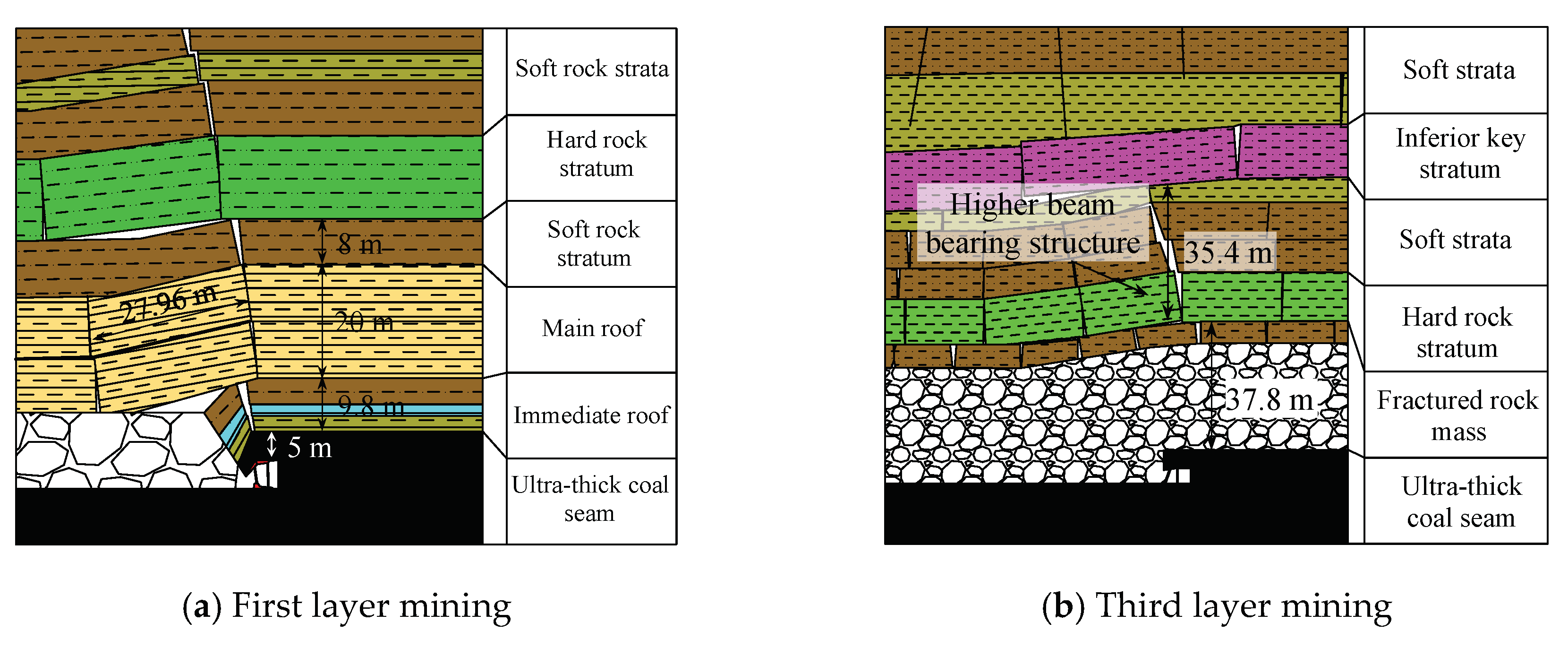
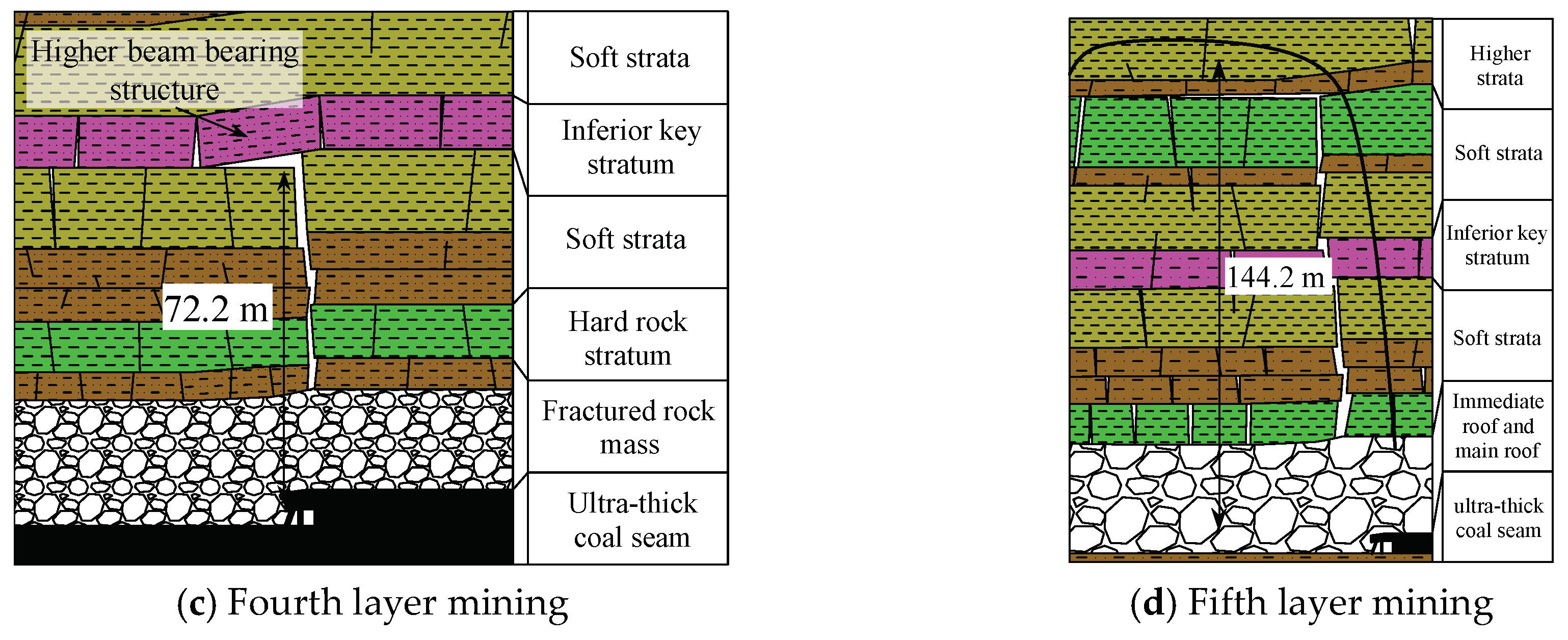

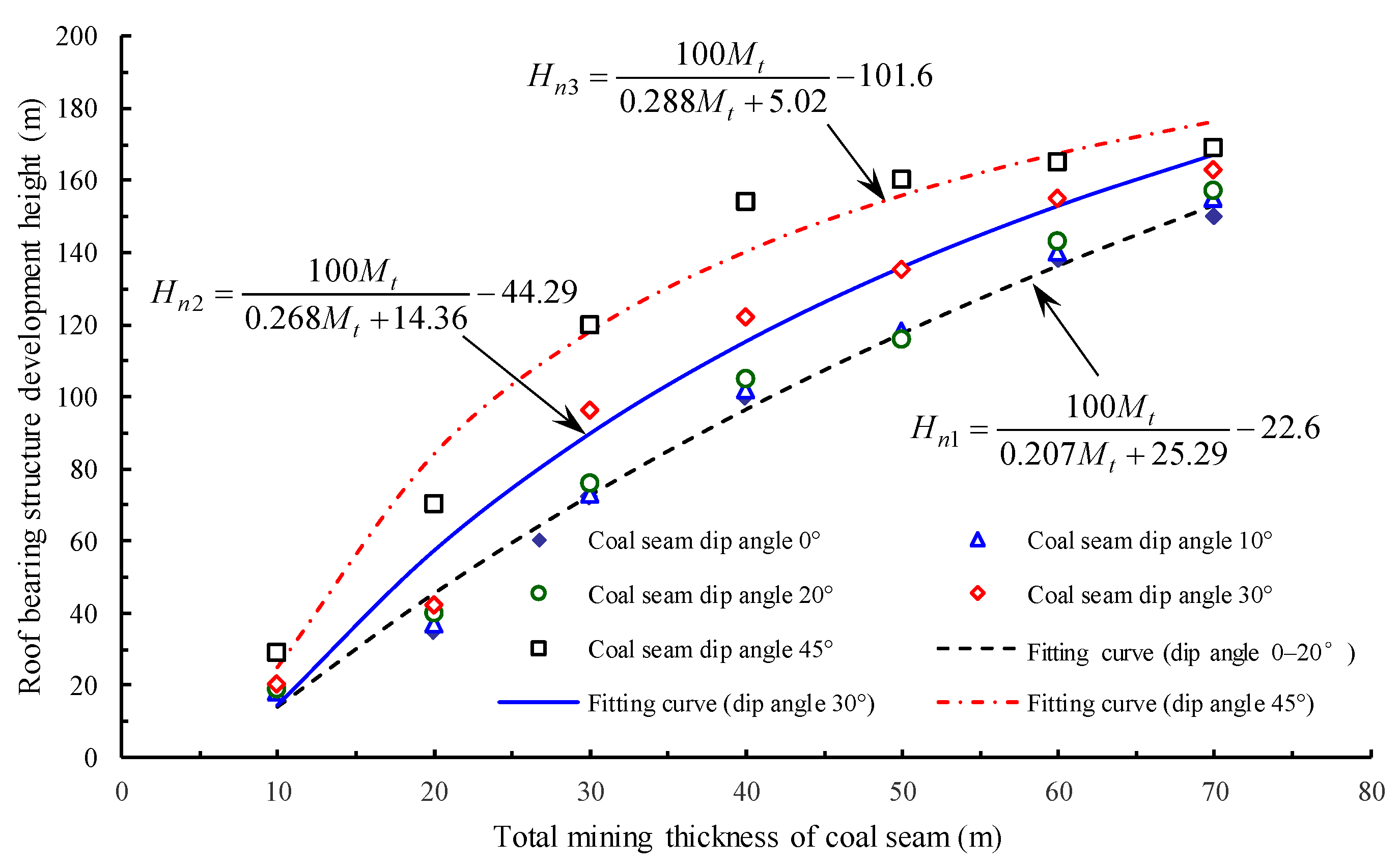
| Model size | Simulating scheme | ||
|---|---|---|---|
 | Coal seam dip angle 0° | Coal seam dip angle 10° | Coal seam dip angle 20° |
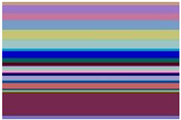 |  | 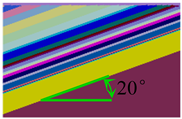 | |
| Coal seam dip angle 30° | Coal seam dip angle 45° | ||
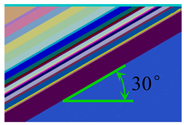 |  | ||
| Types | Classification conditions | Roof bearing structure form | Development height of roof bearing structure (Hn) |
|---|---|---|---|
| Type I coal seam | HM < Hn | no stable bearing structure | Dip angle of coal seam α ≤ 20°; Hn1 = 100Mt/(0.207Mt + 25.29) − 22.6 20° < dip angle of coal seam α < 30°; Hn2 = 100Mt/(0.268Mt + 14.36) − 44.29 30° ≤ dip angle of coal seam α; Hn3 = 100Mt/(0.288Mt + 5.02) − 101.6 |
| Type II coal seam | Hn < h and Hn < HM | (higher) beam bearing structure | |
| Type III coal seam | Hn ≥ h and h < HM | arch bearing structure |
| Types | Type I coal seam | Type II coal seam | Type III coal seam |
|---|---|---|---|
| Typical mining areas and coalfields | / | Ili Coalfield: The average thickness of 5# coal in Yining mining area is 21.36 m. The thickness of C1-C5 group coal in Nilka mining area is 26 m. Turpan-Harmi Coalfield: The thickness of 13 # coal in Toksun Heishan mining area is 32.09 m. East Junggar Coalfield: The average thickness of B2 coal in Jiangjunmiao mining area is 30.62 m. | Turpan-Harmi Coalfield: The average thickness of C8 coal in Shaerhu coalfield is 96.82 m. East Junggar Coalfield: The average thickness of B coal in Dajing mining area is 70 m. |
| Mining technology | Backfill mining | Longwall caving mining is adopted in seams with small dip angle or thickness of 20–30 m, and backfill mining is adopted in seams with large dip angle. | Longwall mining at the early stage, backfill mining at the later stage. |
| Schematic diagram of the roof bearing structure control | 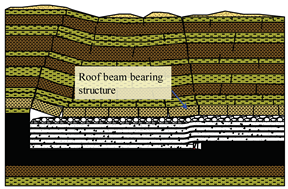 | 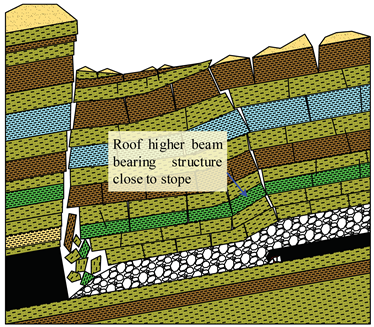 |  |
| When longwall caving mining, near-stope higher beam bearing structure can keep stable | |||
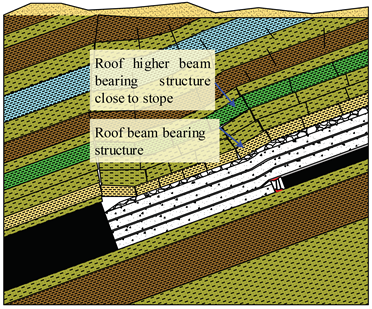 | |||
| Backfill mining limits the movement space of roof strata and ensures the stability of beam bearing structure. | When the dip angle of coal seam is large, backfill mining is adopted to ensure the stability of beam bearing structure (near-stope higher beam bearing structure). | Longwall mining at the early stage, backfill mining at the later stage, beam bearing structure instability, near-stope higher beam bearing structure keeps stable |
© 2019 by the authors. Licensee MDPI, Basel, Switzerland. This article is an open access article distributed under the terms and conditions of the Creative Commons Attribution (CC BY) license (http://creativecommons.org/licenses/by/4.0/).
Share and Cite
Qin, D.; Wang, X.; Zhang, D.; Guan, W.; Zhang, L.; Xu, M. Occurrence Characteristic and Mining Technology of Ultra-thick Coal Seam in Xinjiang, China. Sustainability 2019, 11, 6470. https://doi.org/10.3390/su11226470
Qin D, Wang X, Zhang D, Guan W, Zhang L, Xu M. Occurrence Characteristic and Mining Technology of Ultra-thick Coal Seam in Xinjiang, China. Sustainability. 2019; 11(22):6470. https://doi.org/10.3390/su11226470
Chicago/Turabian StyleQin, Dongdong, Xufeng Wang, Dongsheng Zhang, Weiming Guan, Lei Zhang, and Mengtang Xu. 2019. "Occurrence Characteristic and Mining Technology of Ultra-thick Coal Seam in Xinjiang, China" Sustainability 11, no. 22: 6470. https://doi.org/10.3390/su11226470
APA StyleQin, D., Wang, X., Zhang, D., Guan, W., Zhang, L., & Xu, M. (2019). Occurrence Characteristic and Mining Technology of Ultra-thick Coal Seam in Xinjiang, China. Sustainability, 11(22), 6470. https://doi.org/10.3390/su11226470






